There are a few things that are really important when you are setting up your weaving. (Ok, there are a lot of things) Some of the big things are EPI, PPI, choosing the right materials.
(If you are interested in learning more about planning your weaving check out my ebook!)
One other aspect of setting up your weaving that is really important is your warp tension.
The tension of your weaving will affect how the warp and weft interact and how easy it is to weave certain types of weavings.
This page may contain affiliate links. If you purchase something through these links then I will receive a small commission – at no extra cost to you! Please read our DISCLAIMER for more info. Thanks for the support!
Why it’s important (tapestry vs pattern)
Creating an even tension on your warp is important because it will set up your weaving for success. Starting off your weaving with uneven tension or tension that is not right for the type of weaving you are creating is not ideal. In fact, it will make weaving harder.
I have said it many times before, but high tension is incredibly important when weaving tapestry.
Make sure to check out my entire tapestry post HERE.
Since tapestry requires your weft to flow around your warp it is important that it doesn’t move much or really at all. So in this case: the tighter you can make your tension the better. This is why certain types of looms are better for tapestry than others.
If you ever try weaving tapestry on a loom with inadequate tension you will notice that it can become frustrating when your warp is moving as you are trying to beat your weft. It won’t fully compress unless you fiddle with it. Weaving already takes long enough – we don’t have time for that!
Pattern weaving, on the other hand, requires a tension that is less tight. That does not mean that you want a loose warp. You want the warp to still be tight enough that it maintains your correct warp spacing because loose warp will move around.
Pattern weaving (this includes plain weave) actually deflects the warp instead of flowing over it. This means that you will need a little bit of flexibility in the warp so that it can move. If your warp is too tight when weaving a pattern then it won’t weave up correctly.
How to get good tension
When you are setting up your warp and tying it onto your loom you will always want to start at the selvedges and work your way in. That means you do one set of warps on one side, then another set on the other side. Move back and forth until you get to the last set of warps in the middle.
If you were to start on one side and just make your way across to the other side, you will probably end up with the beginning set of warps being a lot looser. Then you will have to start over.
It is also a good idea to not try to make your warp as tight as you can during this first step of tying on. Tensioning works best when all of the warp is already tied on because you can compare it to the other warps.
My favorite way to tie my warp to the front apron rod is with a half-bow. Check out my post on 5 essential knots for weavers.
The half-bow is a great option because it is easy to untie if you need to adjust your tension and it is very strong. A lot of weavers will use a simple square knot instead. This will work, but if you have to adjust it then it can be hard to undo. It also makes it harder to take your warp off your loom when you are all done. The half-bow is just as strong as the square knot but makes your life a little easier.
How to test your tension
As you weave you will begin to know what is a good tension for what you want to weave. Until then, there are a few things to look for when setting up.
Tapestry warp
Your tapestry warp should be similar to a string instrument.
So in case it is not clear, I want you to strum your warp.
I do this every time I set up my weavings. It isn’t going to have the same musical sounds as a guitar when you strum it but it should make a sound. If your warp doesn’t make a sound then it isn’t tight enough.
I also press down on the warp with the palm of my hand and I’m looking for very little give. You will never get it so tight that there will be no give (if you did it would probably break your warps.)
Pattern weaving
Your pattern weaving tension is a little harder to describe. You are looking for tension that gives but is not loose. You can try to strum it, and it may make some noise, but it will be duller than the noise of your tapestry warp.
Press down with your palm and it will be softer.
You are looking for your warp to be firm, but not super tight.
How to fix it
The best option is to make sure that your tension is right to begin with.
That being said, even if you tension your warp perfectly from the beginning it is possible that your tension could be off as you weave more.
Losing tension on parts of your warp can happen for any number of reasons including but not limited to: your warp is long, you have a lot of different patterns, holes, or there is pull-in throughout the weaving. All of these things could use up different amounts of warp or move your warp so that the tension changes.
If this happens then there are 2 main options that you can choose from to fix your tension.
Wedge
If the tension is only a little off then you might be able to get away with a wedge.
A wedge is anything that you can put under the warps that need tensioned at the back beam to take up any slack. You can use cardboard, folded paper, a small piece of wood, or really anything that can add a little extra height to the back beam. Keep in mind that things like cardboard will compress over time so you may have to change it out or try something harder that won’t compress.
This is ideal to fix small areas of tension or areas that don’t need a lot of help. If you need a lot of tension fixed then you will be better off with the weighted option.
Weight
When your tension is off a lot in certain spots then you will want to try something a little more heavy-duty than cardboard. In this case, you will need to weigh down your warp yarn to create that extra tension.
The amount of weight that you need will depend on how much tension is required. You will want to attach your weight to your warp and have it hang from the back beam. You may have to create a hook or a device to attach your weight, but you may also be able to use some scrap yarn loosely tied around the warp(s) to attach your weight.
A lot of weavers will keep heavy nuts and bolts to tie to their yarn, but if you need a lot of them to make up the weight you want you can put them in a small container to keep them together. Then hang the container from the warp. I often use fishing weights for this purpose.
If you are weaving on a floor loom and have that height to your advantage a great option to use is a water bottle or jugs depending on what you need. In the image above, I found that using a c-clamp gave me just the right amount of tension I needed.
You may have to play around to find what works best for the tension you need.
Don’t be afraid to attach weird things to your warp! We have all done it.
Let me know the “weirdest” thing you have used to fix your warp tension in the comments!
⇣ Love It? Share It! ⇣
You May Also Like















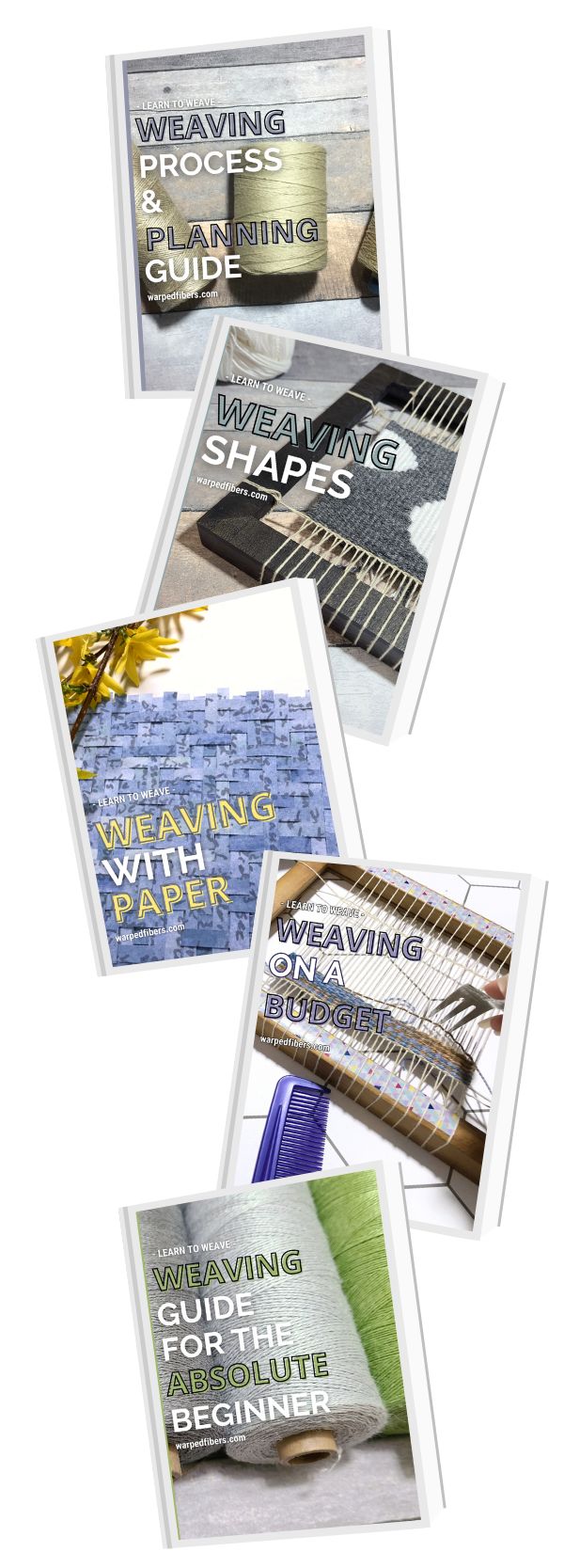
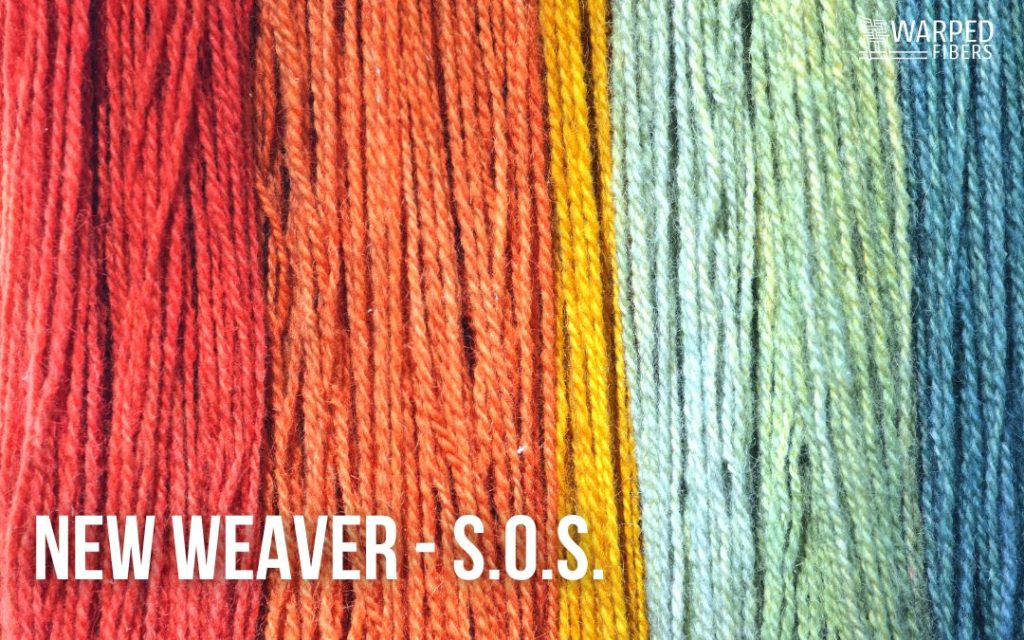

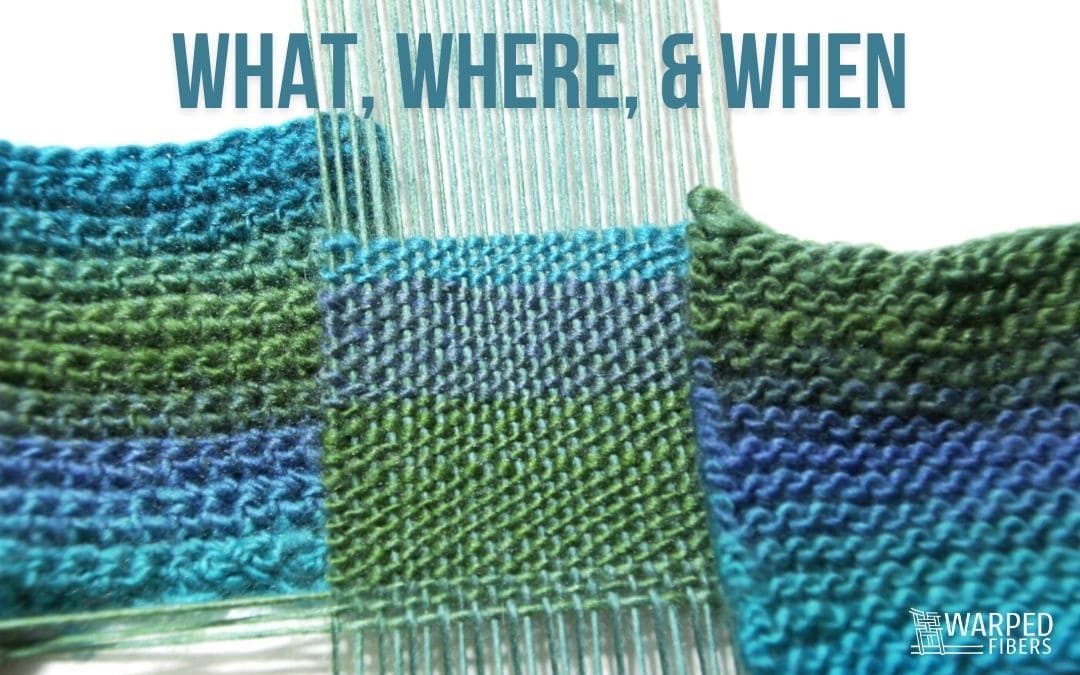

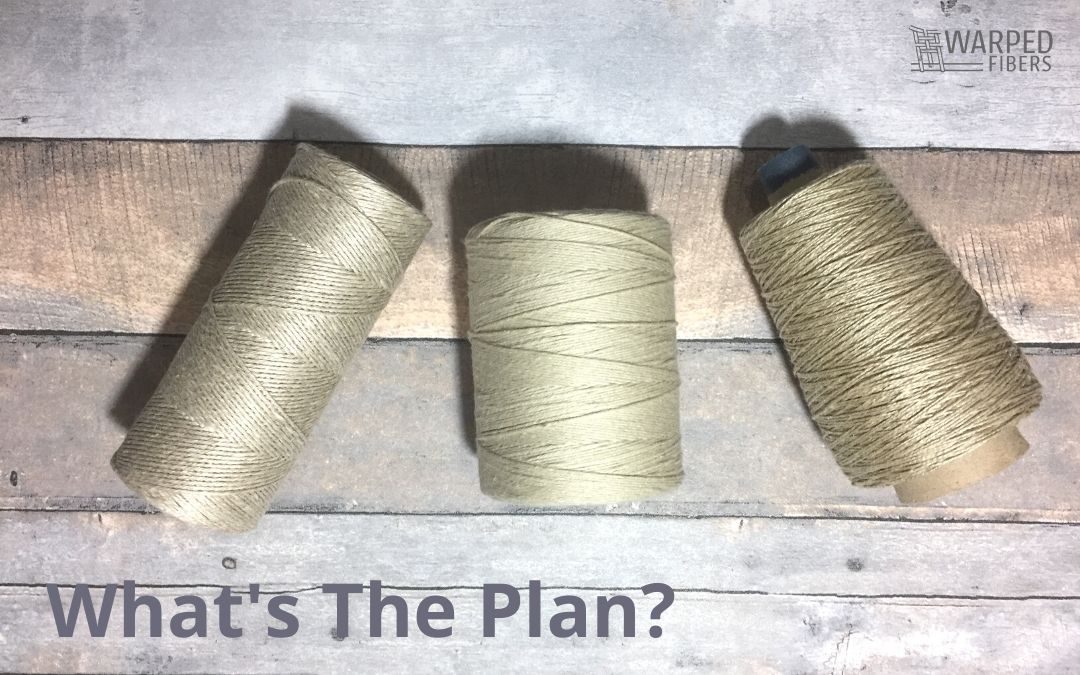

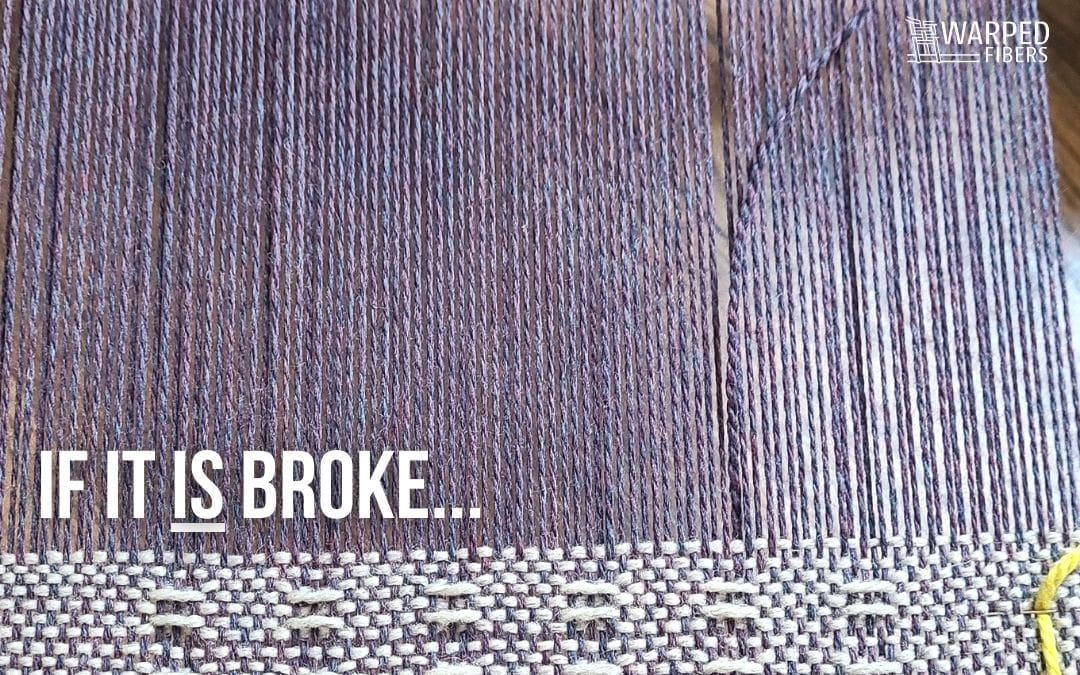

I actually have a good idea for weights. I also do a craft with seed beeds and a round loom to make beautiful jewelry it’s called “kumihimo “..
They use a weight with a hook on it that works perfectly for this. I wish I could send a picture.
That’s such a great idea! Thanks for sharing!
Thank you for your great info😊 I’m new to weaving & am having trouble with pull in/ warp creeping , is this a tension issue?
Thanks 😊
Tension could be playing into that, but more likely you’re no leaving enough slack in your weft. Check out this post on keeping your selvedges straight. Hope this helps 😊
Thanks for that I am weaving a 24 foot floor runner,everything was fine for the first 8 feet now,I am experiencing problems
Beverley
That can be frustrating! Glad that this post could help 🙂
Thanks for the suggestions. I’ve been doing the wedge method. I never even thought of the weights idea. In spite of doing that when I have to replace a missed or broken thread. Sometimes you just need a different perspective.
So true! Glad this helped!